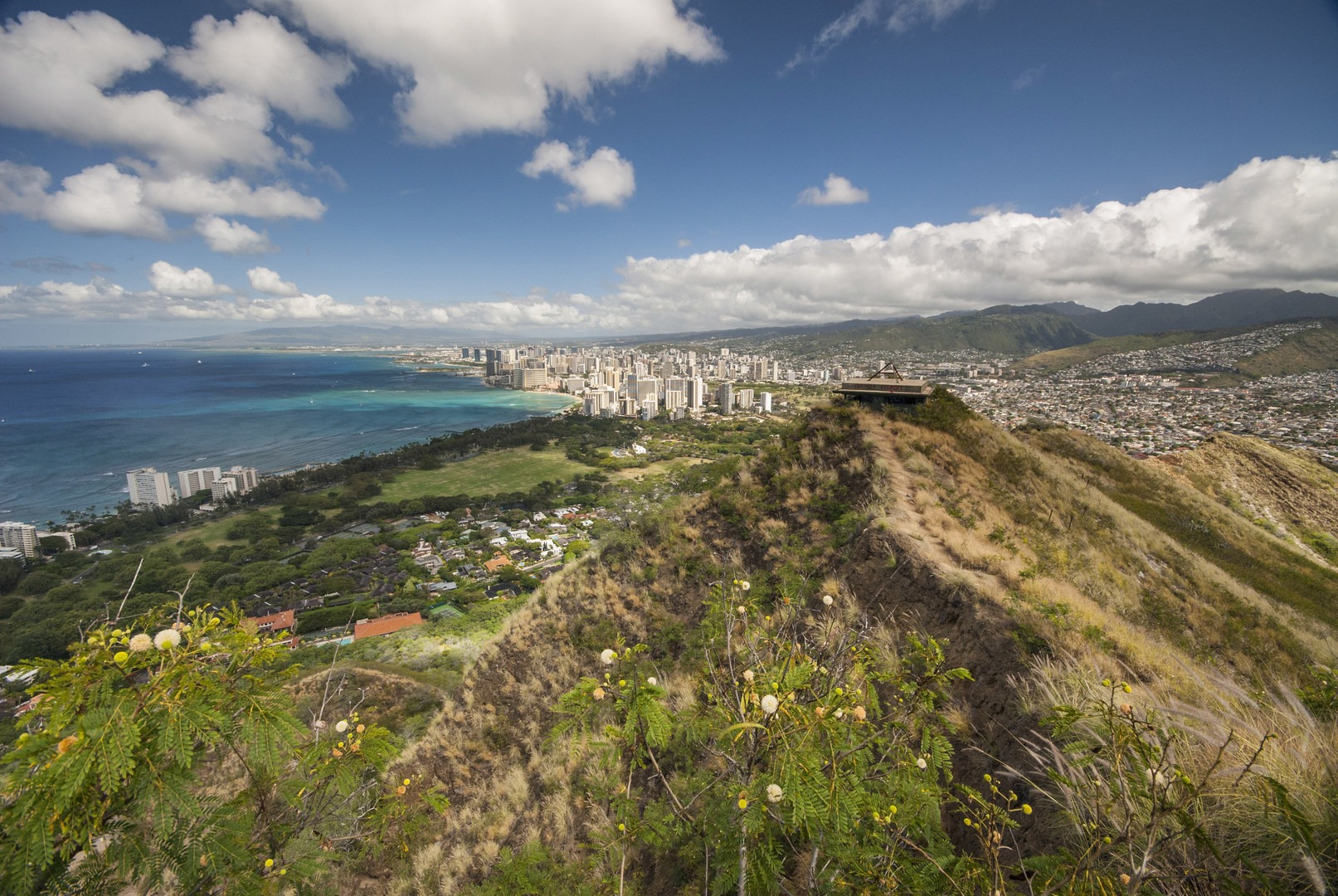Diamond Head crater (also known as Lē‘ahi, meaning "tuna-shaped promontory" in Hawaiian) is an iconic natural landmark of Honolulu and the surrounding skyline. Formed up to a half a million years ago during the geological event known as the Honolulu Volcanic Series, Diamond Head crater, Punchbowl, Hanauma Bay, and Koko Head are all relics of similar explosive histories. This long-dormant volcanic cone is now one of the most popular outdoor attractions on the island of O'ahu, boasting a memorable scenic vista and remnants of a military past. On an average day, over 3,000 people hike to the top of the crater to admire the fantastic views.
The hike itself consists of an entirely paved path through dry scrub-like vegetation, which was introduced to the area in the late 18th and early 19th centuries. Consequently, there is very little shade, and the heat can be oppressive under a midday sun. Come prepared with a hat, sunglasses, sunscreen, and plenty of water in reusable containers.
The trail makes its way up the steep ridge via many gradual switchbacks at the back of the crater. A concrete landing and viewpoint marks the end of the switchbacks and the beginning of the more demanding stair sections. The first set of 74 stairs leads to the base of a long and dimly lit rock tunnel, at the end of which a right turn and another 99 steps lead to the entrance of the Fire Control bunker, which directed artillery fire from nearby forts. Another 52 spiral stairs lead up four stories to the bunker observation decks and gun mounts. The last 54 steps lead to the summit lookout at an elevation of 761 feet, where hikers are rewarded with stunning panoramic views of Honolulu, Waikīkī, the Ko'olau mountains, and the southern coast of O'ahu. From the summit, continue along the crater rim, down 82 steps that loop back to the tunnel, passing more bunkers and installments that were built in 1915. A southern-facing lookout into the crater provides another scenic vista toward Koko Head and the distant islands of Lana'i and Maui. Upon reaching the tunnel, return down the same way back to the crater floor.
The Diamond Head State Monument includes an area of 475 acres, which encompasses the entire inner crater and outer ridges. The trail was built in 1908 and was later paved to reduce erosion and increase public access. The park is open daily from 6:00 a.m. to 6:00 p.m. with the last entrance to the hiking trail at 4:30 p.m. Entrance fees are $5 per car or $1 per pedestrian, cash only. Parking can be limited, especially during peak hours and weekends. A small gift shop, restrooms, and snack vendors are available to visitors during regular operating hours. No pets are allowed except for registered service animals.

























Comments
Sign In and share them.